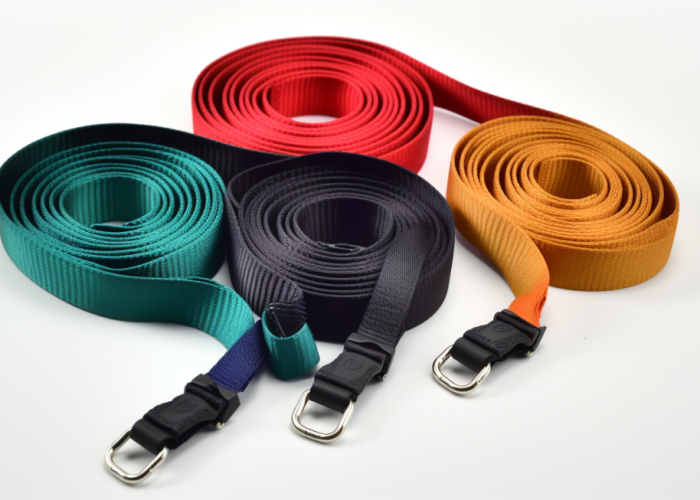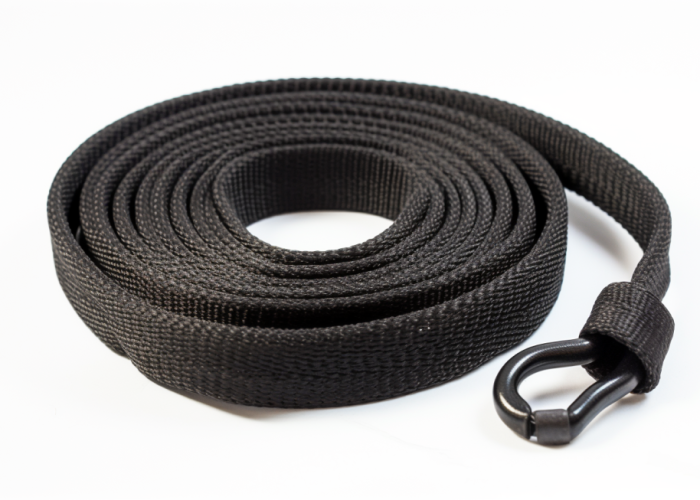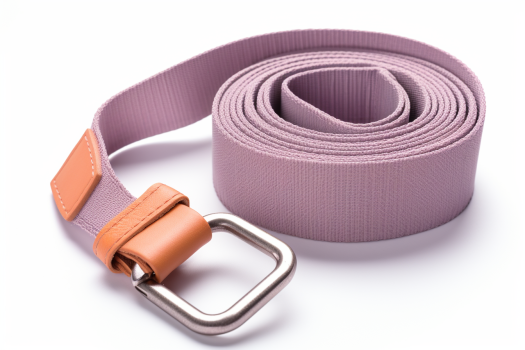Custom webbing solutions elevate arm wrestling equipment performance through precision-engineered materials. With 15+ years developing specialized webbing for sports equipment manufacturers, we understand the critical balance between grip enhancement, durability, and competition compliance.
Arm wrestling straps are specialized webbing products measuring 1.5-2 inches wide with 500-2,000 lbs tensile strength that enhance grip stability through textured surfaces and reinforced stitching patterns. High-density polyester or nylon construction ensures optimal friction while evenly distributing force across the wrist during competitive matches.
Below, we’ll examine the key material properties affecting performance, competition-specific load requirements, and manufacturing considerations that give your arm wrestling equipment the competitive advantage athletes demand.


Webbing manufacturing expert with 15+ years of experience helping product developers build high-performance straps for industrial, medical, and outdoor use.
High-tensile nylon and polyester webbing maximize arm wrestling strap performance with 500-2,000 lbs tensile strength and 5-7% controlled elasticity, ensuring optimal grip without compromising wrist stability during intense matches. Type 6,6 nylon provides enhanced strength for elite competition, while polyester offers superior moisture management for training environments.
Nylon webbing offers superior performance for competition-grade arm wrestling straps due to its natural elasticity and excellent recovery properties. The polyamide structure provides optimal friction against skin while maintaining dimensional stability under repeated stress. For elite competition straps, manufacturers often specify Type 6,6 nylon with its enhanced tensile strength and reduced stretch compared to standard Type 6 formulations.
Polyester webbing serves as an excellent alternative for training-focused straps, offering greater abrasion resistance and moisture-wicking properties. Unlike nylon, polyester maintains consistent performance across varying humidity levels, making it ideal for equipment used in diverse training environments. Our manufacturing capabilities include producing custom blended webbings that combine the strength of polyester with the grip characteristics of nylon for specialized applications.
Environmental factors significantly impact material performance, with high-quality webbing maintaining consistent properties between -40°F to 180°F (-40°C to 82°C). UV-stabilized formulations prevent degradation during outdoor competitions, ensuring color fastness and structural integrity throughout the product lifecycle.
Competition arm wrestling straps require specific load ratings by weight class: lightweight divisions (≤165 lbs) need 500-800 lbs capacity, middleweight divisions (166-198 lbs) require 800-1,200 lbs, and heavyweight divisions (199+ lbs) demand 1,200-2,000 lbs ratings with mandatory 5:1 safety factors for all competition equipment.
Professional competition standards mandate a minimum 5:1 safety factor for all competition equipment, meaning straps must withstand five times the expected maximum load without failure. Third-party certification testing validates these ratings through dynamic load testing that replicates actual competition conditions rather than static load measurements.
Material thickness and weave pattern significantly impact load capacity. Single-layer flat webbing typically provides 20-30% less strength than equivalent tubular designs, which distribute forces more evenly across the material structure. Our manufacturing capabilities include producing specialty double-layer composite webbings that maximize strength while maintaining the flexibility required for proper wrist positioning.
Edge finishing techniques play a crucial role in maintaining structural integrity under load. Heat-sealed edges prevent fraying and maintain consistent performance throughout the strap’s service life, while reinforced stitching patterns at stress points increase durability where traditional designs often fail.

Webbing patterns directly impact grip quality through texture depth (0.5-2mm), surface friction coefficient (0.5-0.8μ), and moisture management capabilities. Herringbone and diamond patterns increase surface contact by 15-25% over flat webbing, significantly reducing slippage during critical competition moments.
Tubular-woven designs provide superior grip characteristics compared to flat webbing due to their three-dimensional structure. The circular construction creates multiple contact surfaces that adapt to hand positioning, particularly beneficial during technique transitions. Our specialized looms can produce custom tubular patterns with variable density zones to enhance grip precisely where athletes need it most.
Surface treatments significantly impact grip quality, particularly in high-humidity environments. Silicone-impregnated webbings maintain up to 90% of dry grip strength when wet, while untreated materials can lose 40-60% of friction coefficient under similar conditions. For maximum competition advantage, our manufacturing process can integrate hydrophobic barriers within specific webbing sections while maintaining breathability elsewhere.
Pattern depth must balance grip enhancement with skin comfort. Excessively aggressive textures can cause abrasion during extended matches, while patterns under 0.5mm depth provide insufficient friction under maximum load. Through extensive testing with professional athletes, we’ve developed optimal pattern depths of 0.8-1.2mm for competition-grade equipment.
International Arm Wrestling Federation (IAWF) standards govern competition straps, requiring minimum breaking strength of 500 lbs for lightweight and 1,200 lbs for heavyweight divisions, certified testing documentation, and manufacturer traceability markings for all official competition equipment.
Quality assurance protocols require batch testing of raw materials before manufacturing, with fibers undergoing tensile and abrasion resistance verification. Manufacturing consistency is maintained through computerized tension control during weaving, ensuring dimensional stability across production runs. Each finished strap undergoes individual inspection for weave integrity, edge finishing, and hardware attachment quality.
Certification documentation must accompany all competition-grade equipment, detailing specific material composition, manufacturing date, and test results. Equipment inspections at sanctioned events verify compliance with these standards, with non-conforming products disqualified from competition use.
Manufacturers seeking to produce competition-approved equipment must maintain ISO 9001:2015 quality management systems specifically focused on webbing production consistency. Our manufacturing facilities maintain these certifications, allowing us to produce competition-compliant webbing for equipment brands worldwide.

Custom webbing significantly enhances athlete performance through variable-density patterns providing 20-30% greater grip at critical contact points, moisture-channeling structures maintaining 85-90% dry friction when wet, and engineered flexibility zones reducing wrist fatigue during extended matches.
Strategic elasticity zones within a single webbing piece allow for controlled stretch precisely where beneficial while maintaining rigidity elsewhere. This engineered performance characteristic enables equipment designers to create straps that adapt to individual technique styles, providing competitive advantages for athletes at all skill levels.
Color-coding systems integrated directly into the webbing structure can provide visual feedback for proper hand positioning, particularly valuable for training equipment. Our manufacturing capabilities include producing multi-colored patterns within a single webbing piece without compromising structural integrity or grip characteristics.
Advanced manufacturing techniques allow for the integration of specialized grip compounds directly into the webbing structure during production, eliminating the need for secondary treatments that can wear off with use. These permanent performance enhancements maintain consistent characteristics throughout the product’s entire lifecycle.
Professional arm wrestling straps last 200-500 competition matches depending on material construction and maintenance protocols. Heavy-duty nylon with reinforced edges offers 30-40% longer service life than standard polyester, while composite constructions provide maximum longevity under professional usage conditions.
Material degradation occurs primarily at high-stress points, with failure typically initiating at edge boundaries rather than in the main webbing body. Our manufacturing process incorporates reinforced selvedge construction that increases edge durability by up to 50% compared to standard cut-edge techniques, significantly extending useful life.
Maintenance procedures significantly impact longevity, with proper cleaning protocols extending service life by 20-30%. Professional-grade webbing should be hand-washed with mild detergent, avoiding harsh chemicals that degrade fiber integrity. Complete air-drying is essential before storage to prevent mildew development that weakens structural integrity.
Visual inspection criteria for competition equipment includes checking for color fading (indicating UV degradation), edge fraying (suggesting structural weakening), and dimensional stability (confirming weave integrity). Equipment showing any of these warning signs should be retired from competition use immediately to prevent failure during critical matches.
As a specialized webbing manufacturer, we provide custom arm wrestling strap solutions that balance competition-grade performance with brand-specific requirements. Our expertise in material selection, pattern engineering, and production consistency ensures your products deliver the durability, grip quality, and load ratings athletes demand while meeting all regulatory standards.
The minimum order quantity for custom arm wrestling straps is 300 pieces per design, with volume pricing discounts starting at 1,000 units. For product development samples, we offer small-batch production of 10-25 units with expedited manufacturing timelines to support your testing requirements.
Custom webbing product development typically takes 2-4 weeks from specification approval to production samples, with full production runs requiring an additional 3-5 weeks depending on volume and complexity. Our rapid prototyping service can deliver concept samples within 7 business days for time-sensitive projects.
Yes, specialized grip patterns can integrate with standard webbing through our hybrid manufacturing process that combines standard base webbing with custom surface textures. This approach reduces development costs by 30-40% while maintaining performance characteristics required for competition-grade equipment.
Our arm wrestling strap webbing receives IAWF equipment certification, ISO 9001:2015 manufacturing compliance, and independent laboratory testing for tensile strength, abrasion resistance, and environmental stability. All products include certification documentation required for sanctioned competition use.
Environmental factors affect strap performance primarily through humidity impacts on friction coefficient, with nylon webbing losing up to 15% grip strength in high-humidity environments. Temperature extremes (below 20°F or above 120°F) can temporarily alter elasticity properties by 5-10% until material returns to normal operating range.
Training straps differ from competition-grade straps in three key aspects: material durability (700-900 vs. 1,000+ washing cycles), reinforcement at stress points (single vs. double reinforced stitching), and quality certification requirements (manufacturer vs. third-party verification). Competition straps also feature permanent tracking identifiers for verification.